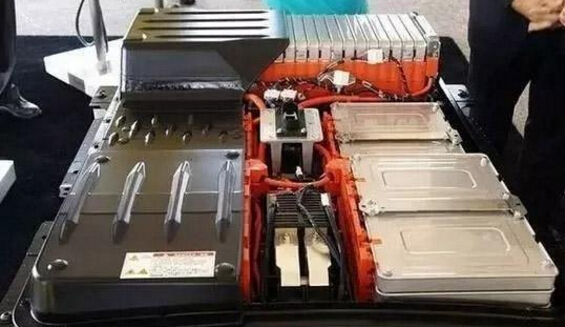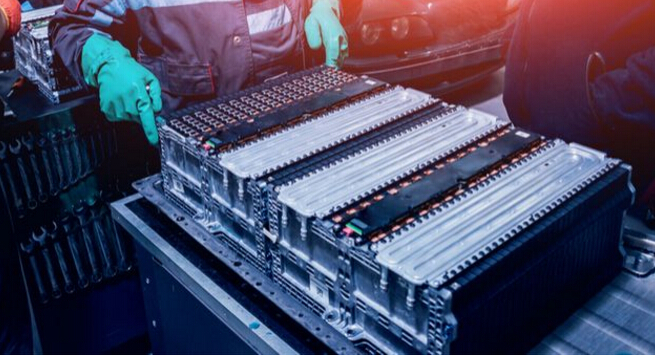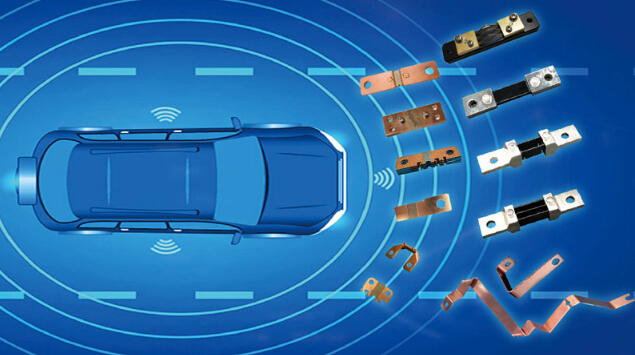Milliohm Resistance Requires High Load Power in New Energy Automotive Electronic Systems
Writer:Microhm Page View:Date:2018-11-28
New energy vehicles use batteries as the power source. The operating current of the electronic control system of the car body is mostly between 1-100A. In special cases, there will be a short-time 200-300A current, and the starting current of the vehicle is even as high as 1500A. . In such a working environment, the milliohm resistance in the automotive electronic system is required to instantaneously receive high load power, which is a test of the performance of the resistor.

Many automotive resistors use an etched alloy foil resistor structure with a thickness between 20 and 150 mm, so heat dissipation from the resistor material to the terminals is not possible. One of the current solutions is to bond a resistive alloy foil to a substrate material (copper or aluminum) that also has good thermal conductivity with a thin, thermally conductive adhesive. This structure can effectively transfer heat to the surrounding environment, ensuring that the resistor has a very low thermal internal resistance, usually between 10-30K/W, which can effectively cope with the problem of instantaneous high load power heating of automotive electronics.

For a very low resistance resistor using a composite structure, the cross-sectional area and mechanical strength of the resistance alloy are large, so it is not necessary to use the bottom plate, which means that the resistance material has a sufficiently low thermal internal resistance, for example, the resistance of 1 milliohms has a thermal internal resistance of about 10K/W, but with a resistance of 100 microohms, the thermal internal resistance is only 1K/W. This new resistor material provides more solutions for working in a new energy vehicle environment, and can bring more choices to automotive electronic systems.

Many automotive resistors use an etched alloy foil resistor structure with a thickness between 20 and 150 mm, so heat dissipation from the resistor material to the terminals is not possible. One of the current solutions is to bond a resistive alloy foil to a substrate material (copper or aluminum) that also has good thermal conductivity with a thin, thermally conductive adhesive. This structure can effectively transfer heat to the surrounding environment, ensuring that the resistor has a very low thermal internal resistance, usually between 10-30K/W, which can effectively cope with the problem of instantaneous high load power heating of automotive electronics.
This resistor structure can work at full load at very high temperatures, and power reduction occurs when the temperature reaches a certain height; at the same time, the temperature of the resistive material can be maintained at a low level. This can effectively improve the long-term stability of the resistor and the change in resistance due to temperature. For new energy vehicles, these effectively improve the safe use of automobiles.

For a very low resistance resistor using a composite structure, the cross-sectional area and mechanical strength of the resistance alloy are large, so it is not necessary to use the bottom plate, which means that the resistance material has a sufficiently low thermal internal resistance, for example, the resistance of 1 milliohms has a thermal internal resistance of about 10K/W, but with a resistance of 100 microohms, the thermal internal resistance is only 1K/W. This new resistor material provides more solutions for working in a new energy vehicle environment, and can bring more choices to automotive electronic systems.
Keywords:alloy foil r
Latest News
- Resistor's role in measuring and correcting LED,,,
- Single through-hole resistors' characteristics ,,,
- Why shunt resistors for current sense applicati,,,
- Metal-film resistors with small size, high resi,,,
- 36W High-Current Shunt Resistors MMS8420,,,
- 1W Surface Mount Resistor MPR1206,,,
- An Overview of Microhm Electronics' Resistor Pr,,,
- More anti-sulfur resistors used in harsh envir,,,
- Resistance changes with temperature,,,
- 140W TO247 High Power Heatsinkable Resistor,,,
- MMS5930 is ideal for current sensing in industr,,,
- Shunt resistors selection for engineers' design,,,
- Considerations for choosing precision resistors,,,
- Ceramic Encased Cement Resistors NWH Series for,,,
- Resistors for Passive Balancing in Battery-Pow,,,
Hot Articles
- Microhm will take part in 10th Automotive World,,,
- Thanks for Visiting Microhm's Booth E5-5706 in ,,,
- Resistors in Short Supply: Blame Cars,,,
- New lunch: High Power Precision Shunt Resistor,,,,
- How to Test a Resistor,,,
- Innovative Technology, Future Electric: Electri,,,
- What is Precision Resistors?,,,
- SMD Resistors Sizes and Packages,,,
- The Construction and Features of Metal Film Res,,,
- What is a TO-220 Resisor?,,,
- Hot Selling Products: Precision Shunt Resistors,,,
- How to Calculate the Equivalent Resistance Valu,,,
- What is a Fixed Resistor?,,,
- Resistors in LED Circuits,,,
- Resistors Types and Materials Overview,,,
Resistance applications
- BMS for New Energy Vehicle,,,
- The Main Application for High Precision and Low,,,
- Select the Right Resistor for Harmonic Filterin,,,
- Urbanization Development Bringing the Transform,,,
- Difference Between High Precision Resistors and,,,
- Heater Blower Motor Resistor in Air Conditioner,,,
- Surface Mount Resistor's Size and Package ,,,
- Carbon Film Resistors' Features and Application,,,
- The Measurement Accuracy of Automotive Shunt is,,,
- Shunt Resistor MMS8420 for High Current Stable ,,,
- Miniature future for passive electronic compone,,,
- Industrial Roberts Applied to Solar Photovoltai,,,
- The Four Important Functions of Alloy Resistors,,,
- Precision Resistors' Construction and TCR,,,
- Why Zero-Ohm Resistors?,,,

